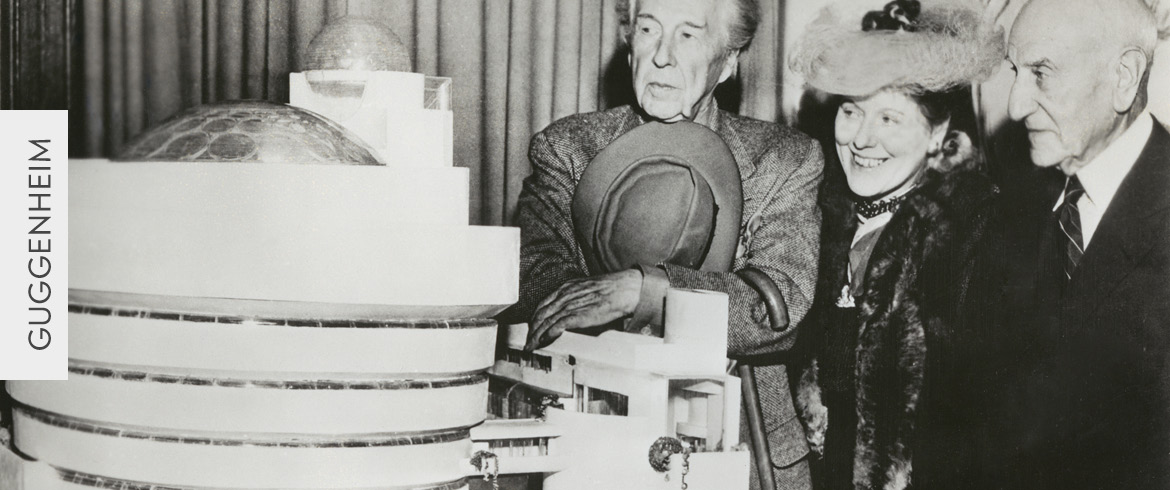Films on the construction of the Solomon R. Guggenheim Museum
Collection Overview
Repository:
Solomon R. Guggenheim Museum Archives.
Creator:
Solomon R. Guggenheim Foundation.
Title:
Films on the construction of the Solomon R. Guggenheim Museum
Call Number:
A0005
Dates:
1952-1961, 2006
Volume:
3 cubic ft. (36 items)
Historical Abstract:
The films on the construction of the Solomon R. Guggenheim Museum were created and collected as documentation of the construction, opening, and early exhibitions of the Solomon R. Guggenheim Museum (SRGM) designed by Frank Lloyd Wright (FLW) and located at 1071 Fifth Avenue, New York, NY. SRGM opened to the public on October 21, 1959. While SRGM was constructed, FLW designed a temporary structure, the Wright Pavilion located at the corner of 89th Street and Fifth Avenue in New York, NY., which opened and held the exhibition, "Sixty Years of Living Architecture," in 1953. The Pavilion was demolished by mid-1956. The films received preservation in 2005-2006 due to a grant from the National Film Preservation Foundation. The film "Buildings & Crowds" contains footage of visitors at SRGM in the opening months; the film "Unidentified Early Guggenheim Museum Exhibition" contains footage of a multi-artist permanent collection exhibition that took place shortly after the opening of SRGM. Highlights of the collection include footage of FLW in the "Wright Pavilion Construction" and Richard Leacock's cinematography in "Guggenheim Museum Construction."
Scope and Content Abstract:
Construction and opening films span the range of 1952 1961 with documentation from 2006. For each film there is the original film, color internegative or black-and-white duplicate negative, positive answer print, Digital Betacam video master, DVD master, and DVD study copy. Documentation includes original camera reports from Richard Leacock, condition reports, two film stills, and the history of the preservation funded by the National Film Preservation Foundation grant.
Location:
Cold Storage Vault
Language:
Collection is primarily in English.
Arrangement:
Arranged in one chronological sequence.
Restrictions:
The collection is unrestricted.
Publication Rights:
Requests for permission to publish material from this collection should be discussed with the Manager of the Library and Archives.
Preferred Citation:
Films on the construction of the Solomon R. Guggenheim Museum. A0005. Solomon R. Guggenheim Museum Archives, New York, NY.
Subjects:
Beth Shalom Synagogue.
Solomon R. Guggenheim Foundation.
Wright Pavilion.
Wright, Frank Lloyd, 1867-1959.
Solomon R. Guggenheim Foundation.
Wright Pavilion.
Wright, Frank Lloyd, 1867-1959.
Contributors:
Leacock, Richard.
Solomon R. Guggenheim Museum.
Solomon R. Guggenheim Museum.
Related Materials:
Frank Lloyd Wright correspondence. A0006. Solomon R. Guggenheim Museum Archives, New York, NY. Albert E. Thiele records. A0032. Solomon R. Guggenheim Museum Archives, New York, NY.
Finding aid prepared by Archives Staff in September 2006.
Historical Note
Scope and Content Note
Folder List


